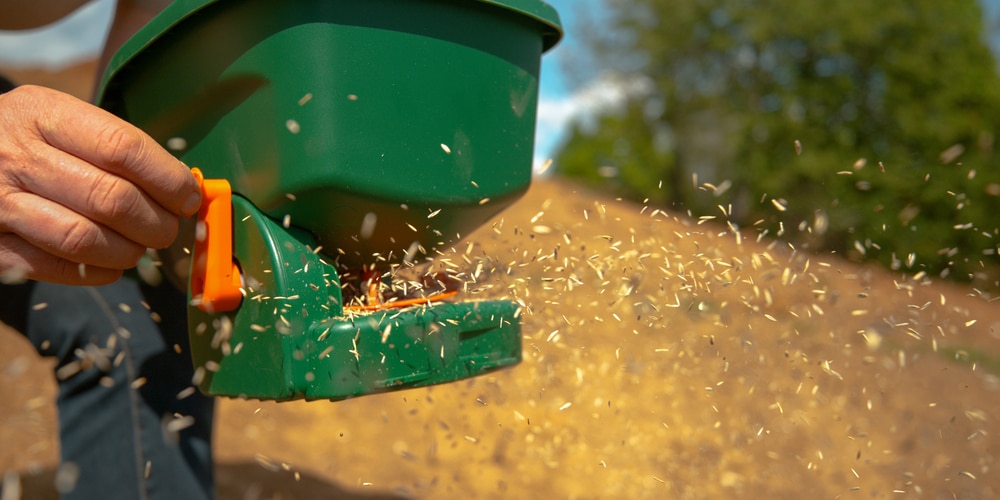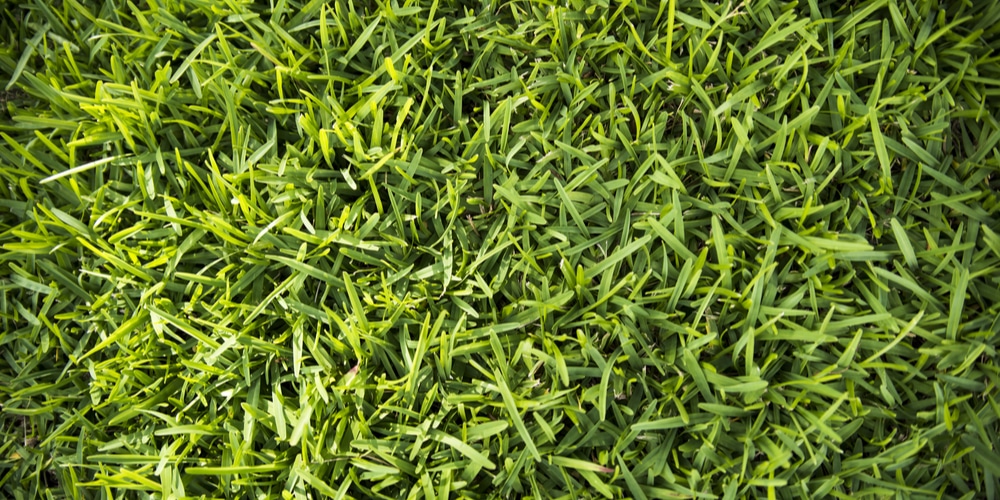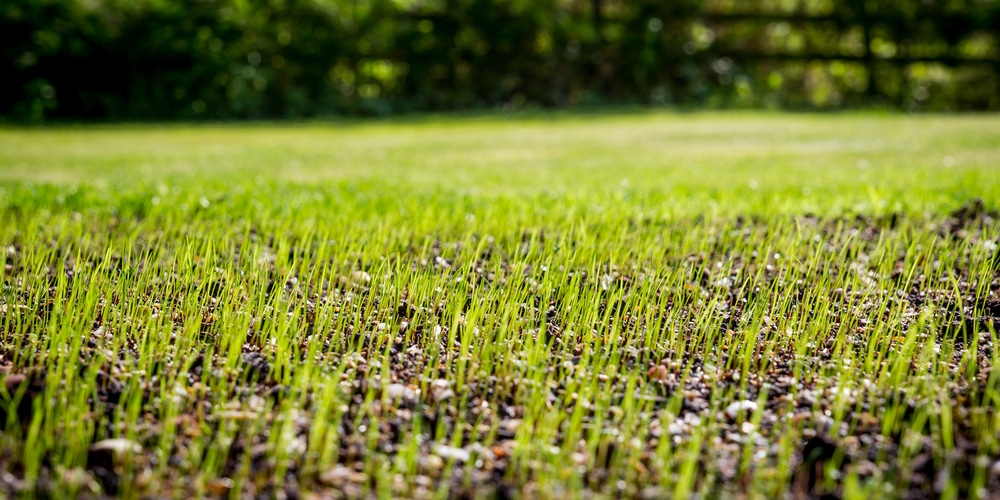Planting grass seeds is an economical way to improve an existing lawn or expand the green space around you. That said, while a lush green lawn is the envy of every neighborhood, it can be challenging to establish.
This is especially true in high elevations, where there are many limiting factors, including a short growing season, frigid winters, and shade.

If you live in the beautiful state of Idaho and are considering seeding your lawn, you might want to know when is the best time to plant the grass.
This is very important considering that Idaho has, well, diverse landscapes and climate, plus it snows during winter months, creating conditions that are not favorable for a majority of grasses.
Further, you need to know what grass seeds you can plant in your garden for the best results.
Read on to find out when you should plant grass seeds in Idaho and some of the go-to varieties of grass for your Idaho lawn.
When is the best time to plant grass seed in Idaho
Proper timing is key to establishing a beautiful, lush green lawn, especially if you are seeding. Planting grass seeds at the right time of the year ensures that the seeds germinate properly, the seedlings grow quickly, and the grass stays healthy as it matures.
That said, when it comes to planting grass seeds in Idaho, there is no set rule for the entire state due to the widely varying climate zones. The best time to seed immensely depends on which climate zone you live in and the type of grass you want to grow.
Typically, subject to factors that affect growth, you can plant grass seeds anywhere between spring and fall, but the best time is late summer through fall. Planting in spring gives the grass a relatively long growing season but exposes them to problems like the summer heat and weeds.
To know when exactly to seed your lawn, you need to pay close attention to your USDA plant hardiness zones and sow seeds at the optimal time, depending on what type of grass you want to plant. Idaho is a very high elevation state, with most people living at about 4,500 feet or higher, and it is known for its unpredictable weather all year long.
Although it is over 350 miles from the Pacific Ocean, its climate is further influenced by maritime, especially in the western region.
The state spans USDA plant hardiness zones 3b through 7b and mainly constitutes mountains and intermountain valleys and basins.
A majority of eastern parts endure a continental climate characterized by short, comfortably warm summers and brutal winters, with snow being typical. Southern Idaho sees a slightly milder climate, whereas the northern region experiences more precipitation throughout the year.
Determining which USDA Idaho planting zone you live in is the first step in raising a lush, thriving lawn. For remarkable results, keep an eye on local weather and follow these guidelines:
Plant warm-season grass seeds in early spring through mid-summer so they can benefit from the warm temperatures and establish themselves before the first frost. You can start seeding anytime once the temperatures are consistently above 65 degrees Fahrenheit.
Plant cool-weather grass seeds in late summer to early fall. Most cool-season varieties are unable to handle the summer heat.
No matter what you are growing in your Idaho garden, beware that the planting zones are more relevant for perennials, not annuals.
Grass seeds for your lawn in Idaho
Idaho’s extremely varied climate means that your go-to grass varieties primarily include cool-season grasses. With proper timing, these grasses can make a beautiful lawn. Here are varieties to consider for your lawn:
Grass for lawns receiving full sun
1. Kentucky Bluegrass (Poa pratensis)
Kentucky Bluegrass is a prime candidate for lawns in Idaho. It is very cold-tolerant, creates a fine-textured lawn, and boasts an ability to easily repair itself to fill damaged areas, eliminating the need to reseed.
When established, it tolerates wear, drought, and extreme temperatures. Yet, it is slow to germinate and requires relatively higher inputs than many other types of grass.
Notably, Kentucky Bluegrass performs best in full sun. Because of its susceptibility to diseases and billbugs, it is not recommended for South Idaho lawns.
If you are in love with this type of grass, but your lawn is entirely shady, you can mix it with fine fescue for those shady spots.
2. Perennial Ryegrass (Lolium perenne)
If you want a good-looking lawn without too much work, Perennial Ryegrass is an excellent option. It germinates quickly and establishes easily to form lush, long-lasting lawn.
When established, Perennial Ryegrass is fairly drought-tolerant, tends to adapt to just about any soil type, and endures daily high traffic.
For those considering this grass, keep in mind that it grows best in full sun.
Grass for shady spots
3. Tall Fescue (Festuca arundinacea)
If you like to have something to do over the weekends, you may want to seed Tall Fescue. This cool-weather grass is well adapted to varied soil conditions and handles heat and drought better than most cool-season turfgrasses. It grows well in areas that get more shade than other types of grass would prefer.
However, it can be tricky to establish. Tall Fescue won’t do well in high elevations, where winters are extreme, and snow is typical.
4. Fine Fescue (Festuca spp.)
This is an excellent option for homeowners concerned about beautiful lawns rather than doing some maintenance for it from time to time. Fine Fescue has the finest leaves of any lawn grass and excels in the shade.
It is great for overseeding as it strengthens turf’s disease resistance.
When to plant grass seed in Idaho: Final thoughts
Dealing with Idaho’s varied climate and unpredictable weather can be challenging. However, this doesn’t mean you can’t add color and texture to your lawn.
Whether you want to seed a new lawn or fill damaged parts of an existing yard, seeding in late summer through fall will ensure your grass germinates and establishes itself before the dangers of frost.
If you live in the Southern parts of Idaho and would like to add warm-season grass to your lawn, feel free to add Buffalograss and Zoysia grass to this list.
Both types have a reputation for doing well in these parts. Hopefully, this post will help you establish a lush, thriving lawn.
You may also like: When to Plant Potatoes in Idaho?

